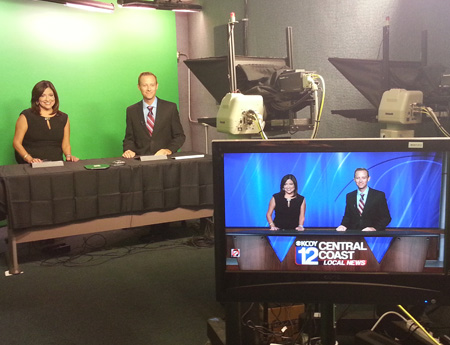Casting the Vote For Augmented Reality

The vote totals flashing out of network studios during the U.S. midterm elections highlighted one winner that will be playing a much bigger role in the broadcast news business— technology for virtual and augmented reality systems.
“Virtual and augmented reality have been more or less standard in sports for a while but now they are really taking hold in news,” says ChyronHego CMO Jesper Gawell. “In the midterm elections, all the main broadcasters were using some sort of augmented reality and now the costs are coming down to the point where they are starting to be embraced by stations.”
That is likely to help the developments gain significant traction in 2015 among stations. “All of the reasons that have held back adoption are now moving aside,” says Dave Larson, GM of Ross Virtual Solutions at Ross Video. “I feel like we are at a tipping point and that adoption will accelerate.” Much of the interest is based on lower equipment costs, greatly improved rendering and processing power that can create very high-quality graphics, greater reliability, ease of use and better integration with existing newsroom and automation systems to reduce operating costs.
All of which adds up to greater value. In terms of cost, the design and creation of a virtual reality set might be as little as one-tenth the cost of creating a physical set, which can run from $100,000 to $500,000 or more, Larson says. The additional equipment needed for virtual or augmented reality systems can bring total outlays up to about the same cost as building and equipping a new studio with a physical set. But virtual sets can also be easily changed or upgraded for relatively little cost, something that is impossible with physical sets, and there are a number of less expensive alternatives on the market.
Will Waters, senior video specialist at NewTek notes that their virtual reality systems come packaged with their production switchers, which start at $4,995 for the TriCaster 40, and that they’ve tried to lower the barriers to entry by allowing users to design sets with widely used graphics systems such as Photoshop.
“It allows them to get to market quicker,” Waters says. “The versatility and costs allow for some experimentation with better storytelling for new shows that might have been prohibitive in the past.”
Stations can also start with much less costly augmented reality systems that provide virtual graphics inside an existing set, an approach that was widely used for the recent election coverage.
Broadcasting & Cable Newsletter
The smarter way to stay on top of broadcasting and cable industry. Sign up below
“There is a lot of interest in augmented reality because it is easier to do and can bring some significant improvements to a newscast,” says David Jorba, senior VP of operations at Vizrt Americas. “It is a great way to start with a minimal investment.”
Better Value All Around
Costs have also been reduced because users no longer need to buy equipment for chroma keys, which are now included in the software, and because these systems are being much more tightly integrated into newsroom and automation systems, which reduces the staff needed to operate them, Jorba and others explain.
“It’s not like the past, where you needed dedicated operators and hardware for each camera,” says Haim Halperin, marketing manager for virtual studios, augmented reality and tracking products at Orad. Their VirtualStudio in a Box, for example, “runs with a single operator or can be connected to newsroom systems or automation systems and run remotely,” he says.
Looking forward, Halperin and others note that tech advances are making these systems much easier to set up, operate and maintain.
Image-based tracking, which has been used in sports for many years, is now beginning to be used in virtual and augmented reality, explains Gawell at ChyronHego. “We think it will be the way forward because it makes it much easier to set up and it reduces initial costs,” he says.
Very important, these technologies can also open up new revenue opportunities, says Larson at Ross Video. “That’s already been very successful in sports but it is still an untapped area in news,” he says. “I think that could be a very hot topic [in 2015] for weather.”










